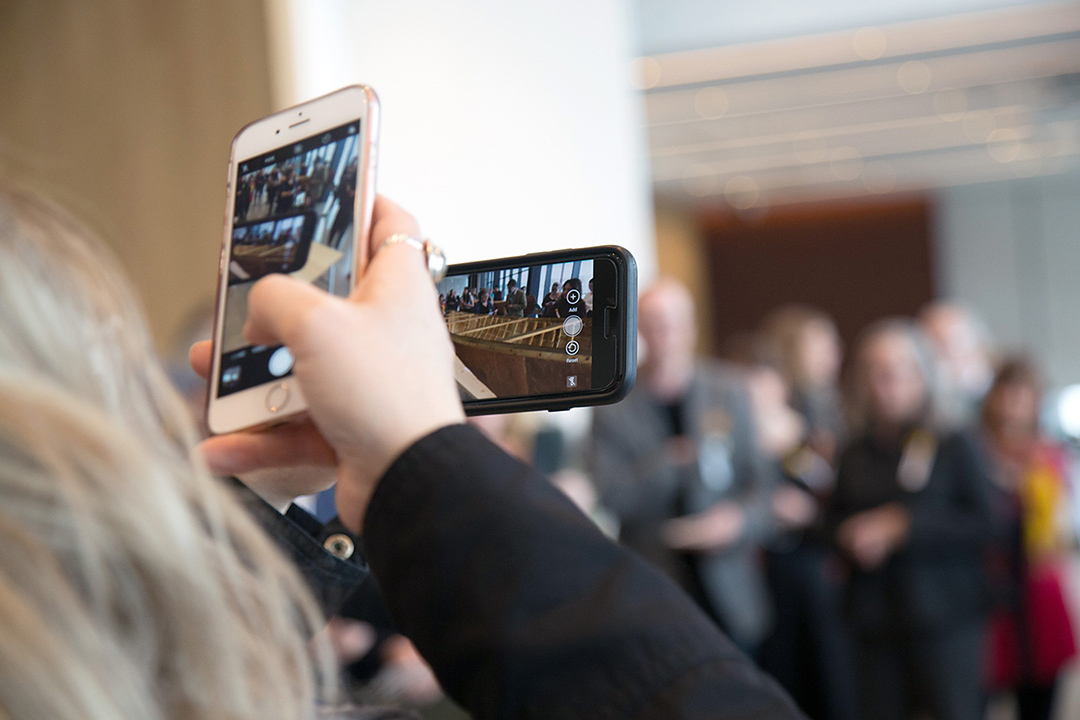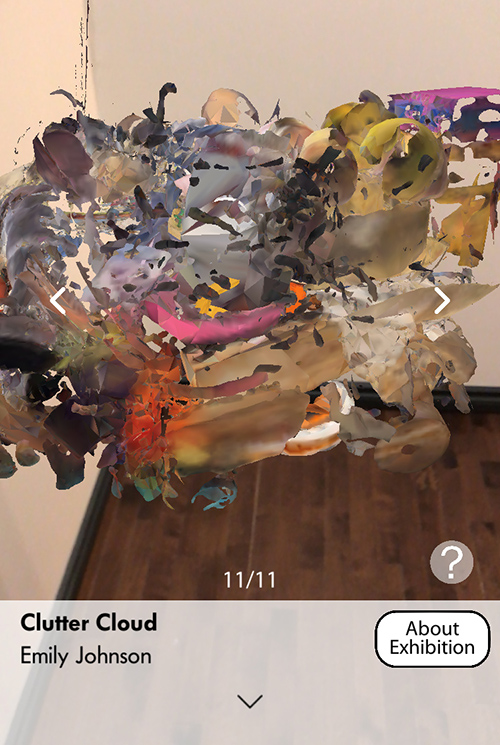
USask’s Shared Spaces project to unveil innovative new app on Nuit Blanche Eve
The University of Saskatchewan (USask) is set to unveil the first test version of a new app being created by students and alumni that will enable people to view artwork in new and innovative ways.
By SHANNON BOKLASCHUKUSask’s Shared Spaces project, which is housed in the College of Arts and Science, will hold its first public event on Oct. 2 in partnership with Nuit Blanche Saskatoon. Nuit Blanche Eve—an event that has previously featured artwork created by USask students and alumni installed throughout campus—is moving online this year due to the COVID-19 pandemic and will be hosted with the Shared Spaces app.

“Nuit Blanche Eve will provide an opportunity to experience new artworks created by USask art students and recent graduates and to do so in a new way—through augmented reality,” said Shared Spaces project manager and USask alumnus Michael Peterson (BFA’09, BSc’10).
“Participants will be able to view a sculpture that changes colour as they move around it, to take part in a virtual game of ‘eye spy’ with everyday objects that have been formed into a large digital pile, and to watch numerous video works, all superimposed into their own environments.”
Shared Spaces is a three-year project of the University of Saskatchewan Art Galleries and Collection (USAGaC). With support from the Canada Council for the Arts, the project is exploring how augmented reality (AR) can create opportunities for connection through art, both by making art accessible anywhere through approaches such as digital 3D sculptures and by providing additional content that is often personal in nature.
Employing user-centred and service design methodologies, the Shared Spaces team has been learning from partner communities throughout Saskatchewan about their needs and desires related to the arts and is leveraging relationships with multiple USask departments to design a new digital service in response, with a focus on Indigenous and other often-excluded voices.
Shared Spaces developed out of an organizational shift within USask’s art galleries, called Galleries Reimagined, “which saw a change in focus from presenting art within the discrete physical spaces of the galleries to asking how the galleries as an organization can better support and be a member of the Saskatchewan arts community,” said Peterson. The project received $482,150 through the Canada Council for the Arts’ Digital Strategy Fund.
As project manager, Peterson supports all aspects of the Shared Spaces initiative, from consultation with partner arts organizations in Saskatchewan communities—including Estevan, La Ronge, Little Pine First Nation, North Battleford, Regina, Saskatoon, and Yorkton—to development outcomes, including the new app.
Peterson said work by artists such as USask alumnus Andrei Feheregyhazi (BFA’03, MFA’17)—who serves as a member of the Shared Spaces project advisory committee—has demonstrated that AR offers an opportunity to engage in new ways.
“During our consultations with artists and audience members across the province, the desire we heard repeated again and again was for greater access to art and, in particular, an opportunity for personal connection—whether that is with the art, the artist, or each other,” said Peterson.
“Digital methods allow for access to art in ways that are not possible with physical artworks, but swiping through images on a phone can often be an isolating experience. In our consultations across the province, we saw people gathering in groups as they looked over each others’ shoulders to view a digital sculpture that filled the centre of the room. Art shown in augmented reality causes you to get up and move around to get the full effect, and in doing so provides a more embodied experience, even when viewing art digitally.”
Prof. Lisa Birke, a faculty member in the College of Arts and Science’s Department of Art and Art History, and Nuit Blanche Saskatoon curator Lydia Miliokas have been working with 10 artists to develop 3D sculptures, videos, and other augmented reality artworks that will be hosted and presented through the Shared Spaces app on Nuit Blanche Eve.
The app was developed by a team of USask students and recent graduates from computer science, art and art history, and interactive systems design. The development team is led by Peterson and Dr. Carl Gutwin (PhD), a faculty member in the college’s Department of Computer Science, and includes Febi Chajadi, Brandon Piller, Lauren Warrington, and Alyanna Rabanal.

The Nuit Blanche Eve event will feature artwork created by a number of USask students and graduates, including Mohsen Ahi Andy, Breanne Bandur, Nicolas Leroy, Jenna Kachur and Kurt Wolfe, Qihang Liang, Emilie Neudorf, Leanne Read, Caila Robson-Kullman, and Emily Johnson.
Johnson, a recent USask graduate who received a Bachelor of Fine Arts degree in the spring, said she created a 3D augmented reality sculpture called Clutter Cloud “using mundane and unique tangible found objects.”
“The work is a visual representation of an individual’s amassed digital junk in the cloud and what it might look like after it has been forgotten and decayed,” she said.
“There is also an integrated eye-spy activity where participants can attempt to find specific objects within the sculpture. This act of searching is intended to draw attention to what might lie amongst the lost data. Are there dangers and implications of leaving this digital junk in the cloud? Are these worries prescient when considering how tech companies store data on us and use it to manipulate our behaviour? Or will this type of hoarding simply create more space in the real world?”
Johnson said she is excited to take part in “the maiden voyage” of adapting Nuit Blanche Eve for the digital world. She said she was “very new” to augmented reality technology before taking part in the project, but she is grateful to have been introduced to it.
“I believe that it is a tool that will not only become more relevant in the art world but also everyday life, especially after witnessing a pandemic that forces us to find new ways to stay connected and experience the joys of life remotely,” said Johnson.
“AR allows art to reach people in their very own homes with more than two dimensions. This medium also suits the subject matter of Clutter Cloud because it is not physically tangible, just like data stored in the cloud. Ironically, the sculpture itself may someday become forgotten digital data.”
A test version of the new Shared Spaces app will be available for download on Friday, Oct. 2, at 6 pm. Links and instructions to download it through the Apple app store or the Google Play store will be made available on the Shared Spaces website and through social media. People interested in taking part in Nuit Blanche Eve are encouraged to email Michael Peterson at sharedspaces.sk@usask.ca and ask to be added to the project mailing list to be the first to receive the link and instructions to download the app. The full version of the app is scheduled to be released in January 2022.

